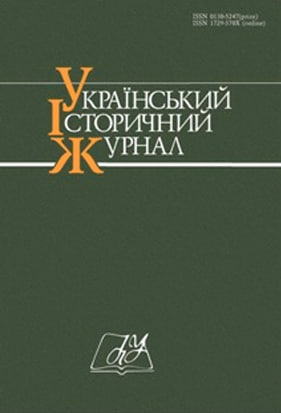The State’s “Hunt” for Citizens’ Foreign Currency Savings during the Period of Industrialization (1930—1934)
DOI:
https://doi.org/10.15407/uhj2025.01.080Keywords:
OGPU, GPU of the Ukrainian SSR, economic departments of the GPU of the Ukrainian SSR, Credit Bureau, insurance policies, insurance companies, foreign currency, remittances, Torgsin, State BankAbstract
The objective is to determine the socio-economic realities constructed in the Bolshevik state regarding the transfer from abroad and confiscation of foreign currency funds from the population. The tasks defined by this objective include analyzing Soviet state practices of confiscating foreign currency from its citizens through money transfers, payments on bank accounts, insurance policies, and inheritance cases.
The methodology combines tools of historical and legal analysis, institutionalism methods, and social anthropology.
The scientific novelty lies in uncovering, based on a wide range of unpublished archival documents, the mechanisms by which the state, through the intermediary of the joint-stock company Credit Bureau and with the involvement of the economic divisions of the GPU of the Ukrainian SSR, accessed foreign currency savings of Soviet citizens abroad.
Conclusions. It has been established that to implement economic projects in the early 1930s, the Soviet regime utilized all possible means to secure the inflow of foreign currency into the country. A mechanism was developed to replenish the state treasury even through money transfers sent to Soviet citizens by relatives and acquaintances from abroad. The currency shortage in 1931 led to the refinement of the mechanism for extracting foreign currency savings held abroad by the population. These processes were reflected in two significant events: the expansion of Torgsin’s powers and the restoration of the joint-stock company Credit Bureau with new functions at the proposal of the OGPU. Through the employees and agents of the economic divisions of the OGPU and the GPU of the Ukrainian SSR, the Credit Bureau identified individuals who had bank accounts abroad, insurance policies with foreign companies, or potential inheritance rights from relatives residing outside the country. After obtaining authorization from these citizens to manage their affairs, the Credit Bureau, following an established mechanism, repatriated their foreign currency savings to the country. All the currency was directed to the State Bank, while potential recipients of foreign currency could only receive a portion of these funds in the form of goods from Torgsin stores. In this way, through state security bodies and the institutions they created, the political regime not only controlled but, under the guise of caring for the population, confiscated even the savings of Soviet citizens located abroad.


